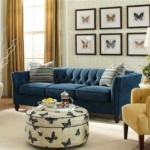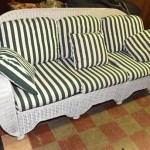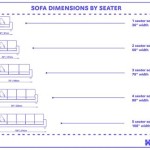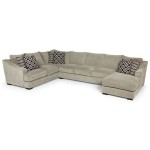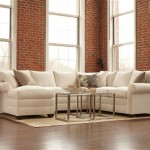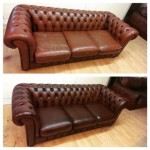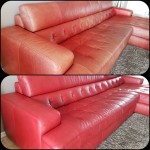Is Chenille A Good Material For A Sofa? Examining the Pros and Cons
Selecting the appropriate fabric for a sofa represents a significant decision for any homeowner. The chosen material substantially impacts the sofa's aesthetic appeal, comfort, durability, and maintenance requirements. Chenille, with its distinctive velvety texture, frequently emerges as a contender during the fabric selection process. This article provides a comprehensive exploration of chenille as a sofa fabric, analyzing its advantages and disadvantages to guide informed decision-making.
Chenille fabric derives its name from the French word for caterpillar, aptly describing its soft, fuzzy appearance. This unique texture arises from the construction of the yarn itself. Chenille yarn is manufactured by placing short lengths of yarn, called "pile," between two core yarns and then twisting the yarn together. This process allows the cut ends of the pile to stand out at right angles from the yarn's core, creating the characteristic plush surface. Chenille can be produced from various fibers, including cotton, acrylic, rayon, and olefin, each contributing unique qualities to the final fabric.
The suitability of chenille for a sofa hinges on several factors, including lifestyle, aesthetic preferences, and anticipated usage. Understanding the material's inherent properties is crucial to evaluating its practicality for a specific application. The following sections delve into the specific advantages and disadvantages of using chenille on sofas.
Enhanced Comfort and Aesthetics
The most compelling advantage of chenille as a sofa fabric lies in its exceptional comfort. The velvety texture provides a soft and inviting seating surface, enhancing the overall relaxation experience. This inherent softness distinguishes chenille from more rigid or textured fabrics, making it a desirable choice for individuals prioritizing comfort.
Aesthetically, chenille offers a rich and luxurious appearance. Its plush texture adds depth and dimension to the sofa, creating a visually appealing focal point in any room. The fabric possesses a subtle sheen that enhances its elegance, contributing to a sophisticated atmosphere. Chenille is available in a wide array of colors, ranging from subtle neutrals to vibrant hues, allowing for seamless integration into diverse interior design schemes. This versatility makes it a suitable option for both traditional and contemporary settings.
Furthermore, chenille's ability to absorb dyes well results in rich, saturated colors that resist fading over time. This colorfastness contributes to the longevity of the sofa's aesthetic appeal, ensuring that it maintains its visual impact for years to come. The fabric's inherent texture also helps to conceal minor imperfections or wear and tear, further contributing to its long-term aesthetic durability.
Chenille's soft texture can also contribute to a feeling of warmth, making it particularly appealing in colder climates. The fabric's ability to trap air within its pile provides insulation, enhancing comfort during the winter months. This inherent warmth, combined with its luxurious feel, makes chenille a popular choice for creating cozy and inviting living spaces.
The visual appeal of a chenille sofa can be significantly enhanced through thoughtful styling. Throw pillows and blankets in complementary colors and textures can further accentuate the fabric's richness and depth. Strategic placement of lighting can also highlight the subtle sheen of the chenille, creating a more dramatic and visually engaging effect. Overall, chenille's comfort and aesthetic qualities make it a compelling choice for individuals seeking a both visually appealing and physically comfortable sofa.
Durability and Maintenance Considerations
While chenille offers undeniable comfort and aesthetic appeal, its durability and maintenance requirements warrant careful consideration. Chenille, particularly when made from rayon or other less durable fibers, can be prone to stretching and distortion, especially under heavy use. The pile construction, while responsible for its softness, can also be susceptible to crushing or flattening over time, particularly in high-traffic areas. This potential for wear and tear necessitates a more cautious approach to its use, especially in households with children or pets.
One of the primary concerns regarding chenille's durability is its tendency to snag or pull. The loosely woven pile can easily catch on sharp objects, such as jewelry, pet claws, or even rough clothing. These snags can detract from the fabric's appearance and, in severe cases, lead to unraveling. Regular vacuuming with an upholstery attachment can help to prevent the buildup of dirt and debris, which can exacerbate the risk of snagging. However, care must be taken to avoid using excessive suction, which can further damage the pile.
Cleaning chenille sofas requires specific attention to detail. Many chenille fabrics are dry-clean only, necessitating professional cleaning services for stain removal and general maintenance. While some chenille fabrics may be spot-cleaned with mild detergent and water, it is crucial to test the cleaning solution in an inconspicuous area first to ensure that it does not damage the fabric. Excessive moisture can cause shrinkage, discoloration, or even mold growth, so it is essential to avoid over-wetting the fabric during cleaning.
Furthermore, chenille can be susceptible to pilling, the formation of small balls of fiber on the fabric's surface. Pilling is often caused by friction and abrasion, and it can detract from the sofa's overall appearance. While pilling can be addressed with a fabric shaver, it is an ongoing maintenance requirement that should be factored into the decision-making process.
The durability of a chenille sofa can be enhanced by selecting fabrics made from more durable fibers, such as cotton or olefin. These fibers are more resistant to stretching, snagging, and pilling than rayon or other less durable options. Additionally, opting for a tightly woven chenille fabric can help to prevent the fibers from loosening and shedding. Regular maintenance, including vacuuming and spot-cleaning, can also extend the lifespan of a chenille sofa and preserve its appearance.
Fiber Composition and Performance Variances
The performance characteristics of chenille sofas are significantly influenced by the specific fibers used in their construction. Cotton chenille, known for its breathability and natural feel, offers a balance of comfort and durability. However, cotton is susceptible to staining and fading, requiring careful attention to cleaning and sun exposure. Acrylic chenille, a synthetic alternative, provides enhanced resistance to staining, fading, and mildew, making it a more practical choice for households with frequent spills or high humidity levels.
Rayon chenille, prized for its luxurious drape and vibrant color absorption, presents the greatest challenge in terms of durability. Rayon fibers are inherently weak and prone to stretching, shrinking, and wrinkling. Consequently, rayon chenille sofas require meticulous care and are best suited for low-traffic areas. Olefin chenille, another synthetic option, offers exceptional resistance to stains, fading, and abrasion, making it a robust choice for active households. Olefin is also relatively easy to clean and maintain, further enhancing its practicality.
The blending of different fibers in chenille fabrics can also influence their performance. For example, a blend of cotton and polyester can combine the breathability of cotton with the durability and stain resistance of polyester. These blends can offer a compromise between comfort, aesthetics, and practicality, making them suitable for a wider range of applications. However, it is crucial to carefully consider the specific fiber composition of any chenille fabric before making a purchase, as it will directly impact its long-term performance.
The density of the chenille pile also plays a crucial role in its durability and resistance to crushing. Denser chenille fabrics tend to be more resilient and less prone to flattening over time. Conversely, loosely woven chenille fabrics are more susceptible to wear and tear and may require more frequent maintenance. Inspecting the fabric closely before purchasing a chenille sofa is essential to assess its density and overall quality.
Ultimately, the choice of fiber composition for a chenille sofa should be guided by a careful assessment of individual needs and priorities. Households with children or pets may benefit from the durability and stain resistance of acrylic or olefin chenille, while those prioritizing comfort and aesthetics may opt for cotton or rayon chenille, provided they are willing to invest in more frequent maintenance. Understanding the performance variances associated with different fiber compositions is critical to making an informed decision and ensuring long-term satisfaction with a chenille sofa.

Velvet Vs Chenille Choosing The Right Sofa Fabric For You

Chenille Vs Velvet Which Is The Right Sofa Fabric For You Comfort Works Blog Resources

Rivio Two Seater Mink Chenille Sofa Sleepland Beds

Nicole Grey Chenille Fabric 3 Seater Sofa Furniturein

1005 Chenille Grey Fabric Sofa

Nicole Grey Chenille Fabric 3 Seater Sofa Furniturein

Rivio Two Seater Mink Chenille Sofa Sleepland Beds

Herringbone Chenille Fabric Furniture Protector Couch Cover Funnyfuzzy

Good Quality Soft Touch One Side Chenille 100 Polyester Fabric For Sofa Furniture Material China Textile And Garment Made In Com

72 44 In W Square Arm Modern And Comfortable Blue Chenille Fabric Straight Sofa With Soft Cushion Gray Ec Sfgy 8173 The Home Depot


